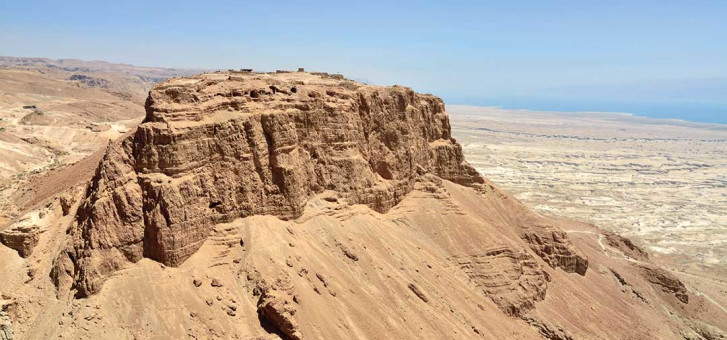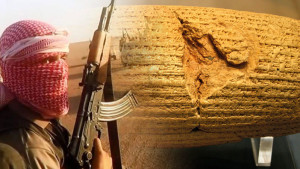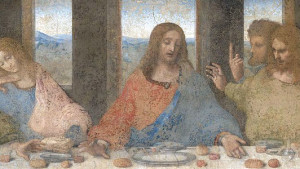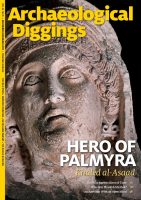Sir Willian Ramsay, a scholar honoured by universities in Britain, Europe and the United States, was knighted for services to archaeology. You can read more of him in “The Archaeologist” in this issue. Raised as an atheist, he first went to Turkey (Asia Minor) to unearth the ancient cities and documents of Asia Minor in the full hope of exposing the perceived fallacies of the biblical book of Acts in particular and the Bible in general. At the time he went to Turkey, the book of Acts contained the only record of many of the cities it mentions. Not only was their location unknown but little was known of their detailed history or politics. Being sceptical, Ramsay fully expected his research to prove Luke, the author of the book of Acts, to be at the least inaccurate and his work largely myth, the product of tradition and something of a hagiography. However, after a lifetime of study, this was his conclusion:
Further study . . . showed that the book
[Acts] could bear the most minute scrutiny
as an authority for the facts of the Aegean
world, and that it was written with such
judgment, skill, art and perception of truth
as to be a model of historical statement.
(The Bearing of Recent Discovery, p. 85)
So what was it that changed his mind? And what have we discovered since that might further reinforce his altered view?
The Census of Augustus
Luke informs us of the following:
And it came to pass in those days that a
decree went out from Caesar Augustus
that all the world should be registered.
This census first took place while Quirinius
was governing Syria. So all went to be
registered, everyone to his own city. Joseph
also went up from Galilee, out of the city of
Nazareth, into Judea, to the city of David,
which is called Bethlehem, because he was
of the house and lineage of David, to be
registered with Mary, his betrothed wife,
who was with child. (Luke 2:1–5, NKJV)
Pliny, a Roman governor of Bithynia, reveals that a regular census was taken by the Romans, while a papyrus from Egypt informs us that everyone had to return to their home for it. This papyrus from Egypt dated to a.d. 104, reads in part:
“. . . it is essential that all those who are
away from their homes be summoned to
return to their own hearths . . .”
Ramsay discovered an inscription at Antioch, which revealed that Quirinius was the chief magistrate of the city in 8 B.C. Evidence reveals that he shared the governorship of Syria with Sentius Saturnius at the time.
Herod the Great
According to the Bible, Herod the Great was exceed- ingly cruel, as evidenced in his murder of all male children in Bethlehem under two years of age at the time of the birth of Jesus of Nazareth (see Matthew 2:1–18). History reveals that Herod was hated and feared by almost everyone. Augustus once commented that it would be better to be Herod’s pig than his son, which was a bitter reflection on the fact that he murdered his wife and her two sons, his mother-in-law and Antipater his loyal firstborn—but being Jewish, would not touch a pig! Josephus referred to him as a man of great barbarity to all men. His numerous fortresses included Herodion near Bethlehem, Masada (pictured) and Maccareus, and were perhaps indicative of the fact that King Herod had many enemies from whom he needed protection.
Herod's Successors
Herod Archelaus
Herod Archelaus, son of Herod the Great, was appointed Ethnarch of Judea, Samaria and Idumea. Joseph knew he was a man to be feared, because while en-route home from Egypt, upon learning that Archelaus was ruler, went directly to Galilee rather than Judea (Matthew 2:22). We now know Herod was hated by the Jews because in sup- pressing a Jewish rebellion, he massacred some 3000 of them. Emperor Augustus eventually exiled him because of his excessive cruelty.
Herod Agrippa
Herod Agrippa is the last of the five Herods mentioned in the New Testament. When Caligula was assassinated in a.d. 41, he backed Claudius to be emperor, who in return made him King of Judea and Samaria. It was this Herod who executed James and imprisoned Peter (see Acts 12:1–19). Luke gives the following account concerning Herod’s death:
So on a set day Herod, arrayed in royal apparel, sat
on his throne and gave an oration to them. And the
people kept shouting, “The voice of a god and not of
a man!” Then immediately an angel of the Lord struck
him, because he did not give glory to God. And he
was eaten by worms and died. (Acts 12:21–23, NKJV)
That might sound a little far-fetched, but it accords perfectly with what Josephus wrote concerning events:
Now when Agrippa had reigned three years over all
Judea he came to the city Caesarea . . . and there he
exhibited spectacles in honour of Caesar, for whose
well-being he'd been informed that a certain festival
was being celebrated. At this festival a great number
were gathered together of the principal persons of
dignity of his province. On the second day of the
spectacles he put on a garment made wholly of silver,
of a truly wonderful texture, and came into the theatre
early in the morning. There the silver of his garment,
being illuminated by the fresh reflection of the sun's rays,
shone out in a wonderful manner, and was so resplendent
as to spread awe over those that looked intently upon him.
Presently his flat- terers cried out, one from one place,
and another from another, (though not for his good) that he
was a god; and they added, “Be thou merciful to us; for
although we have hitherto reverenced thee only as a man,
yet shall we henceforth own thee as superior to mortal nature.”
Upon this the king neither rebuked them nor rejected their
impious flattery . . . . A severe pain arose in his belly, striking
with a most violent intensity . . . . Accordingly, he was carried
into the palace . . . . And when he had been quite worn out by
the pain in his belly for five days, he departed this life.
(Antiquities 19.8.2 343–361)
Lukes Chronology
Dates appear to have been less important in ancient times than they are today. However Luke does give specific chronological data. In Luke 3:1–3, this ancient historian, using a Greco-Roman style, obviously wanted to show the historicity of what he wrote when he gave a large amount of historical data:
Now in the fifteenth year of the reign of Tiberius Caesar, Pontius Pilate being governor of Judea, Herod being tetrarch of Galilee, his brother Philip tetrarch of Iturea and the region of Trachonitis, and Lysanias tetrarch of Abilene, while Annas and Caiaphas were high priests, the word of God came to John the son of Zacharias in the wilderness. And he went into all the region around the Jordan, preaching a baptism of repentance for the remission of sins. (NKJV)
Caiaphas, The High Priest
The New Testament claims that Caiaphus was the High Priest who presided over the Jewish Sanhedran that condemned Jesus Christ to death (see Matthew 26:63–66; John 11:47–53). Both archaeology and ancient history confirm this biblical assertion. First, the Jewish historian Josephus actually names the high priest of the time as “Joseph Caiaphus” (Antiquities 18:35,95). Then, second, in 1990, an ornately decorated ossuary was discovered bearing the Aramaic inscription, “Joseph, son of Caiaphas” (pictured). It contained the bones of two infants, a child, a teenage boy, an adult woman and a man of approximately 60 years of age. Almost all scholars agree that in all likelihood the box contained the remains of Caiaphus, the high priest presiding over the trial of Jesus.
Famine during the reign of Claudius
In the book of Acts, Luke mentions a famine that occured during the reign of the Roman emperor Claudius:
During this time some prophets came down from
Jerusalem to Antioch. One of them, named Agabus,
stood up and through the Spirit predicted that a severe
famine would spread over the entire Roman world.
(This happened during the reign of Claudius.) The disciples,
as each one was able, decided to provide help for the brothers
and sisters living in Judea. This they did, sending their gift
to the elders by Barnabas and Saul. (Acts 11:28–30, NIV)
Josephus mentions the visit of Helena, queen of Adiabene (a territory to the east of the Tigris river), to Jerusalem at this time. She had accepted the Jewish faith. Of this visit Josephus says her coming was “of very great advantage to the people of Jerusalem” because on seeing the suffering caused by the famine, she sent to Alexandria “to buy a great quantity of corn” and to Cyprus “to bring a cargo of dried figs” (Antiquities 20.2.5).
Roman historians Suetonius and Tacitus also mention a famine during the reign of Claudius. Both of whom mention “bad harvests” as being the cause of the famine (Life of Claudius ch. 18, by Suetonius; and, Annals 11:4, by Tacitus).
Explusion of the Jews from Rome
During Paul’s time there were some 13 synagogues in Rome and possibly as many as 40,000 Jews. Luke refers to the expulsion of these Jews by Claudius from the city:
And he found a certain Jew named Aquila, born in
Pontus, who had recently come from Italy with his
wife Priscilla (because Claudius had commanded
all the Jews to depart from Rome); and he came to
them. (Acts 18:2, NKJV)
In AD 49, Suetonius referred to an expulsion of Jews from Rome during the reign of Claudius as follows:
Since the Jews constantly made disturbances at the
instigation of Chrestus, he expelled them from Rome.
The Life of Claudius 25.4)
Pontius Pilate
The New Testament informs us that Pontius Pilate was the governor of Judea who sentenced Christ to death by crucifixion (see Luke 3:1; 23:23, 24). During excavations of a Roman theatre at Caesarea-on-the-Sea (Maritima) in June 1961, by Italian archaeologists led by Dr Frova, a fragmentary Latin inscription was discovered that mentions a certain [Pon]tius Pilatus, [Pref]ectus Iuda[ea]—“Pontius Pilate, Prefect (governor) of Judea”—was the builder of a public structure known as the Tiberieum. Since it was the first non-Jewish and non-Christian mention of Pilate as the governor of Judea, the discovery was of significant value, as critics had frequently questioned the veracity of the Gospels with regard to their mentioning of Pilate.
Sergis Paulus, Proconsul of Cyprus
In Acts chapter 13, Luke reports on Paul’s visit to Cyprus, where at Paphos he met Sergius Paulus, the proconsul of Cyprus:
Now when they had gone through the island to Paphos,
they found a certain sorcerer, a false prophet, a Jew
whose name was Bar-Jesus, who was with the proconsul,
Sergius Paulus, an intelligent man. This man called for
Barnabas and Saul and sought to hear the word of God.
(Acts 13:6, 7, NKJV)
A number of possible references to Sergius Paulus have been discovered. Pliny the Elder in his work on Natural History (Hist. Nat. ii. 90.97, 112) makes reference to a “Sergius Paulus” and also, interestingly, mentions that the island of Cyprus was overrun with those who practiced sorcery, the very thing Luke states that Paul encountered on Cyprus.
There are four inscriptions possibly referring to him, of which two were discovered in Cyprus. The first was found at the city of Silo, just north of Paphos, in 1877. The second, from Kythraia (Chytri) in northern Cyprus, refers to a certain “Quintus Sergius” whose last name is missing. Another, found in Rome in 1887, is on a boundary stone set up by Claudius Caesar. It says that “L. Sergius Paulus” (listed with several others) was responsible for maintaining the banks and channels of the Tiber River. Finally, the name L. Sergius Paulus was also found on an inscription from Pisidian Antioch in Turkey, in 1912.
Erastus, Tresurer of Corinth
The apostle Paul, in his letter to the Romans, written from the city of Corinth in Greece, ends with the following greetings:
Gaius, my host and the host of the whole
church, greets you. Erastus, the treasurer
of the city, greets you, and Quartus, a brother.
(Romans 16:23, NKJV)
In 1929, an inscription on a marble paving slab, dating to the middle of the first century a.d., was discovered at Corinth. It reads: “Erastus, in return for his aedileship, laid this pavement at his own expense.” The aedile was in charge of city finances. Because of the rarity of the name Erastus, and since both Paul and the inscription refer to him as the treasurer of the city, and because it is unlikely two men of the same name would hold financial office in Corinth at the same time, scholars reasonably conclude they refer to the same man.
Gallio Proconsul of Achaia
Luke mentions that when Paul was at Corinth, the Jews brought charges against him before one Gallio, the proconsul of Achaia:
When Gallio was proconsul of Achaia, the Jews with one accord rose up against Paul and brought him to the judgment seat, say- ing, “This fellow persuades men to worship God contrary to the law.”. . .Gallio said to the Jews, . . . “I do not want to be a judge of such matters.” And he drove them from the judgment seat. (Acts 18:12–16, NKJV)
We now know that Gallio was a brother of the philosopher Seneca, who tutored the future emperor Nero. In 1905, a Greek inscription was discovered in the Temple of Apollo in Delphi (pictured). It was ordered by Claudius and refers to Gallio as “my friend and proconsul.”
Rulers (Polytarchs) of Thessalonica
When Luke discusses the visit of the apostles Paul and Silas to Thessalonica, and mentions that some of the believers were dragged before the city rulers, he uses the term “polytarch” (Acts 17:6) for the rulers. When a second century a.d. Roman arch in Thessalonica was demolished in 1876, an inscription known as the Polytarch Inscription was rescued (pictured left). It refers to a number of city officials by the title of “polytarch,” a title now recognized to be common among Macedonian cities, and especially in Thessalonica. Luke clearly had an intimate and accurate knowledge of Thessalonica, and this is yet another example of his trustworthiness as an historian.
The Temple Warning
In 1871 a Greek inscription, dated to the first century a.d., was discovered. It was originally painted in red, as remnants of the colour remain. It read:
No foreigner may pass the barrier and enclosure
surrounding the temple. Anyone who is caught
doing so will be himself to blame for his resulting
death.
Herod’s Temple was surrounded by an open courtyard for the Gentiles. Beyond a three-cubit-high wall were courts for Jewish women, men and priests. Gentiles were not allowed beyond the so-called court of the Gentiles. Josephus informs us of pillars along the high wall “at equal distance from one another declaring, some in Greek and some in Roman letters ‘no foreigner should go within that sanctuary’ ” (Antiquities 5.2).
The New Testament twice refers to this barrier between Jews and Gentiles, the first when Paul was falsely accused by some Jews from Asia Minor of bringing Trophimus, a Gentile, into the sacred temple area (see Acts 21:26–29), and the second by Paul, who no doubt had this barrier with its warning inscriptions in mind when he wrote to the Christian church in Ephesus:
For he himself is our peace, who has made the two groups
[Jews and Gentiles] one and has destroyed the barrier, the
dividing wall of hostility. (Ephesians 2:14, NIV)
Diana of the Ephesians
Acts refers to the goddess Diana (pictured, statue of the Diana of Ephesus in the Vatican Museum), also known as Artemis, as the most important deity of Ephesus. It not only mentions her great temple at Ephesus but also reports concerning a riot in the theatre of the city, where for two hours the crowd chanted her praises, “great is Diana” (Acts 19:23–34). Archaeologists have discovered ruins of the Temple of Diana, which is in fact one of the Seven Wonders of the ancient world. Today, one can sit in the seats of this magnificent theatre at Ephesus where the riot occurred.
Luke in his Gospel and book of Acts mentions some 32 countries, 54 cities, nine islands, and various per- sonalities and events, all of which are known to have existed or occurred, and of which this article contains
but a sampling. Many other archaeological discoveries exist that further confirm biblical writings as an accurate and reliable record of human history and culture, a source not to be readily dismissed. Such was the road that the sceptic Ramsay travelled, until overcome by the weight of evidence, he came to accept the wider history and cultural descriptions of the Bible, along with its deeper themes.
Sources
-
Dictionary of the SDA Bible Commentary.
-
www.BibleHistory.net
-
Clive Anderson and Brian Edwards: Evidence for The Bible.
-
Bryan W. Ball and William G. Johnson, ed. The Essential Jesus.







